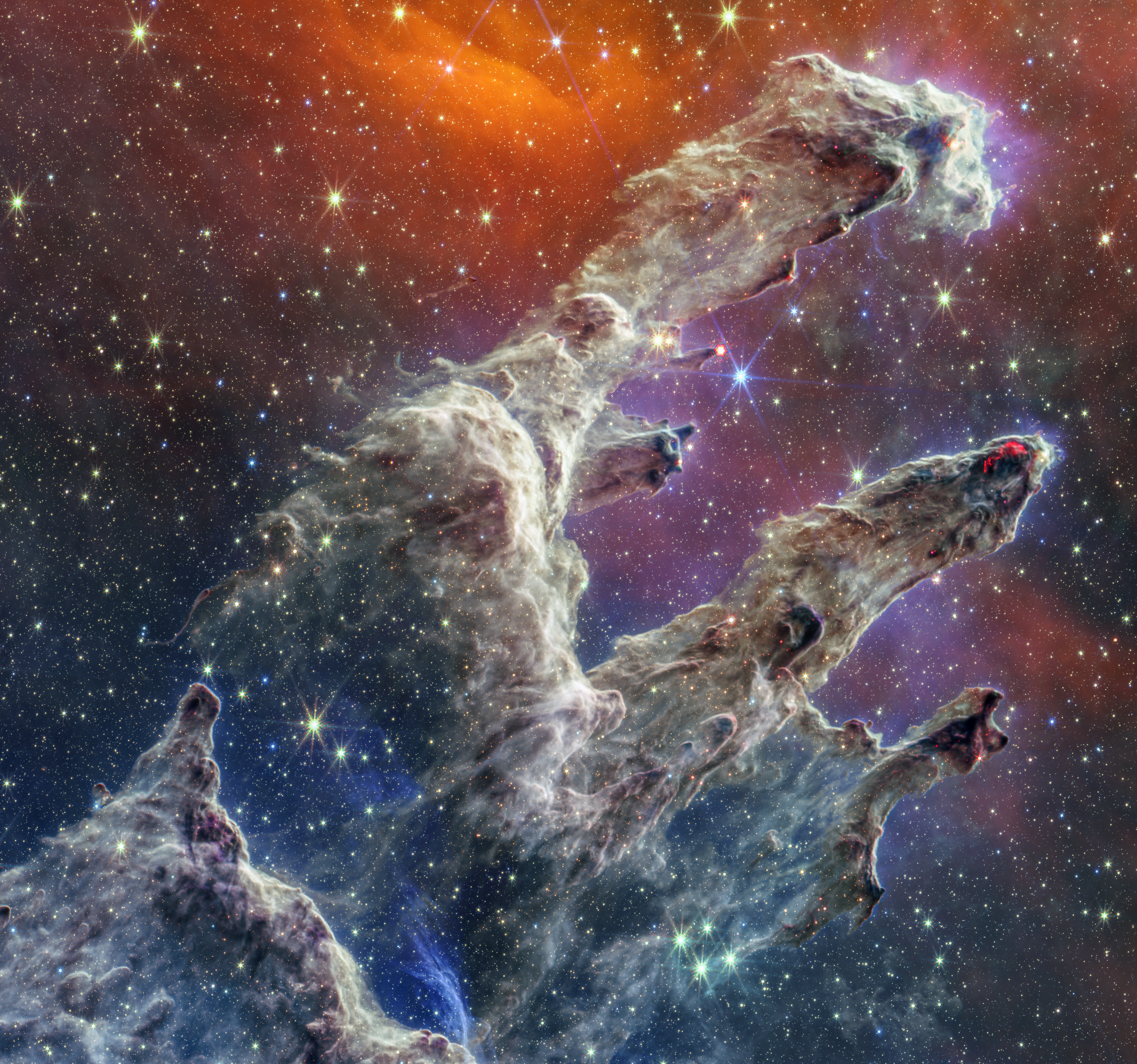Back in October, JWST delighted us with two new images of the famous Pillars of Creation, a cosmic feature of dust and gas rendered famous by Hubble. The images were taken by two different instruments on JWST: the Near-Infrared Camera (NIRCam) and the Mid-Infrared Camera (MIRI), which look at the universe in slightly different lights. Now, the combined view has been released and it’s better than the sum of its parts.
The thousands of newly formed stars and the glittering firmament of established stellar bodies are revealed by the NIRCam while the layer of cool and hot dust from the grayscale layers of the pillars and the orange and purple structure that shields the field of view from more distant light was caught by the MIRI. Almost everything you see here is local to the Eagle Nebula, a large gas cloud 6,500 light-years away.
The combined NIRCam and MIRCam view of the Pillars of Creation. Image Credit: SCIENCE: NASA, ESA, CSA, STScI IMAGE PROCESSING: Joseph DePasquale (STScI), Alyssa Pagan (STScI), Anton M. Koekemoer (STScI)
New details about these incredible structures have come to light. Among the most intriguing features is the lava-red structures seen in the pillars, especially the middle one. These are the places where the youngest stars are at their most active creating supersonic jets of material as they grow. They are estimated to be only a few hundred thousand years old.
JWST’s new view of the Pillars will help astronomers build a better 3D view of the star-forming region, meaning a better understanding of how and where stars form.
Source Link: Final JWST "Pillars Of Creation" Image Is Too Beautiful For Words
